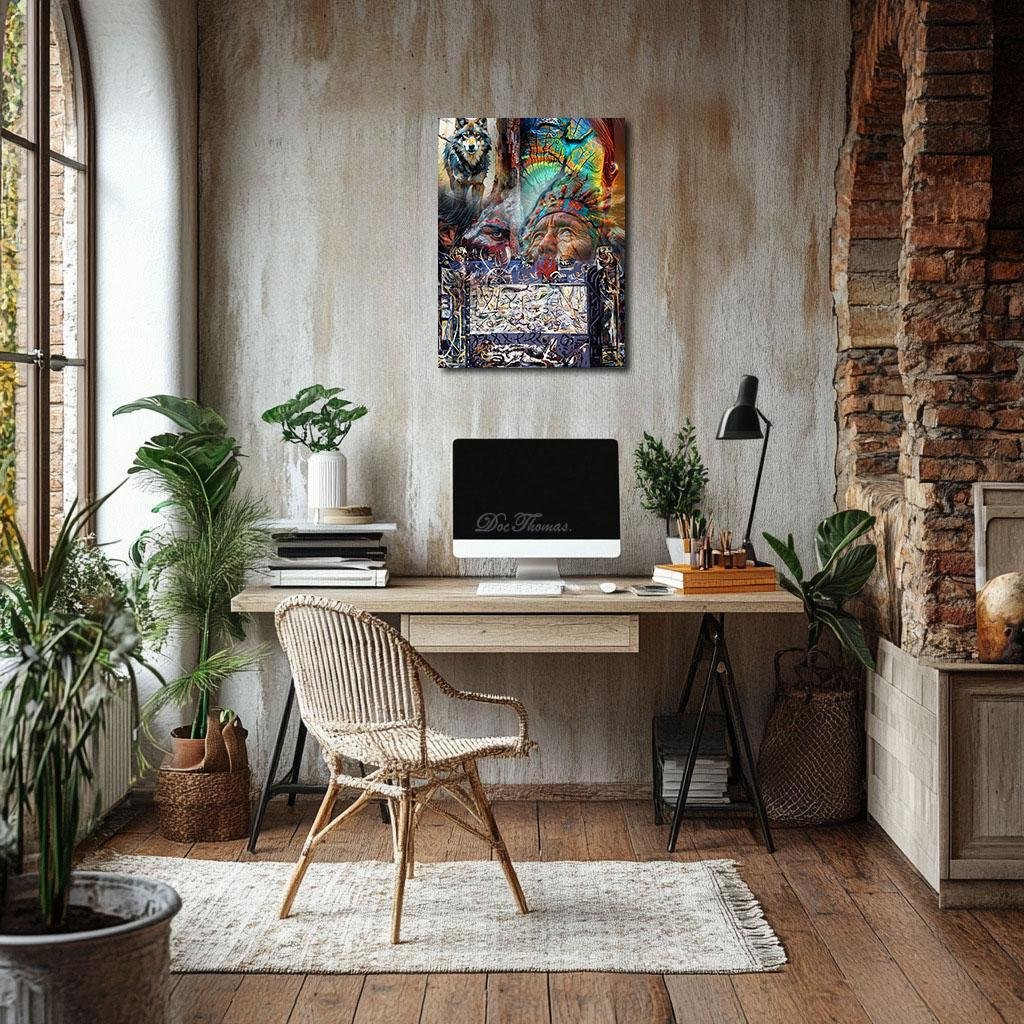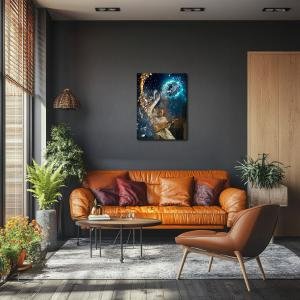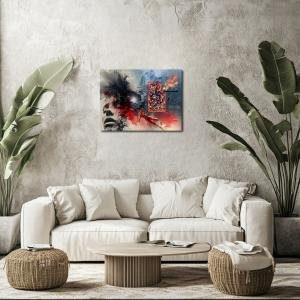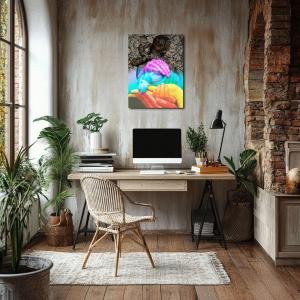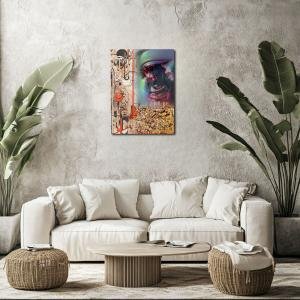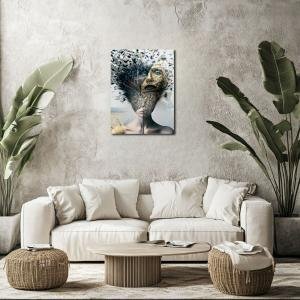Veins of Porcelain: The Shaman’s Geometry
Veins of Porcelain: The Shaman’s Geometry transforms Jackson Pollock’s Guardians of the Secret into a ceremonial meeting of ancestral memory and abstract myth. Visionary faces emerge—marked with cracks of spiritual light, worn skin, and painted truths—watching over a symbolic altar alive with Pollock’s cryptic forms. A spectral wolf stands sentinel, invoking instinct and ancient wisdom. Rusted reds, sacred turquoise, cracked gold, and ash greys converge across the composition, binding ritual with abstraction. This reimagination turns Pollock’s chaos into a sacred map—a geometry of guardianship etched in breath, pigment, and spirit.
Please see Below for Details…
Hotline Order:
Mon - Fri: 07AM - 06PM
404-872-4663
Veins of Porcelain: The Shaman’s Geometry reimagines Jackson Pollock’s Guardians of the Secret as a mythic convergence of ancestral guardianship and abstract memory—a ceremonial unveiling where tribal wisdom merges with fractured symbols of modern chaos. In Pollock’s original, the cryptic slab served as a silent script, guarded by totemic beings. In this reconstruction, it becomes a living altar—flanked by human faces marked with the fire of ritual, weathered skin carrying maps of survival, and a spectral wolf that watches with knowing stillness.
The sacred tableau is vertically divided. Above, we ascend into the psychic terrain of visionaries: one elder wrapped in iridescent neural cracking, another with his brow painted like a landscape of language, and another whose gaze has witnessed storms unspoken. Their presence is not passive—they are dreamers, not ghosts. They keep watch over the symbolic altar below, which is a reanimated version of Pollock’s frenzied central form—now functioning as a mythic tablet. His marks, once random and sacred, now echo with purpose: coordinates of survival, invocations, and maps of spiritual inheritance.
Pollock’s visual chaos is woven into the ceremonial structure. His looping, clawed gestures now border the slab like protective glyphs. They drip like time itself—bloodlines scrawled in motion. The slab becomes the boundary between worlds: past and present, flesh and myth, art and ancestry. The symmetry of the original transforms into asymmetrical balance, where ancient skin cracks align with abstract color fractures, suggesting continuity in disorder.
The color language of this reimagination burns slowly. Rusted reds and earth-raw browns dominate the faces—symbolizing rootedness, pain, and ritual heat. Deep turquoises ripple through skin textures, evoking veins of sacred water or the slow pulse of wisdom. Cracks of electric green and molten orange split the forehead of one elder, recalling synaptic fire or the shattering of prophetic visions. Gold emerges faintly in the Pollock section below—not royal, but spiritual, glimmering like dust caught in sunlight. The wolf’s coat is ash-grey and smoke-kissed, echoing the unseen spirits watching from behind the veil. This is not a color palette for comfort; it’s for remembering.
As the artist, I imagined this piece as a reckoning between lost language and inherited knowledge. In Pollock’s original, the central slab was a mystery I never wanted to decode. I wanted to surround it instead—with witnesses. With memory. With power. What if the altar didn’t need translation but guardianship? What if art is not something to be read but protected? I envisioned each abstract mark as a breath from the past, each face as a vessel for something too sacred to name.
The wolf was essential. It represents the ancient instinct in all of us—the ability to perceive what logic cannot. In many traditions, wolves are guides, protectors, shadows of intuition. I placed it here not as an animal, but as an echo of something older than narrative. The way its eyes lock with yours is deliberate. It demands you enter this ritual not with intellect, but with reverence.
The composition honors Pollock’s chaotic sincerity, but directs it. Where he unleashed subconscious motion, I gathered it around figures who lived that motion—shamans, elders, protectors. I wanted Pollock’s symbols to feel like windblown ash across their skin, the dust of time blown back from a future that forgot them.
In this reimagining, Guardians of the Secret is no longer an enigma. It is a rite. It is the convergence of those who remember, those who listen, and those who carry fire behind the eyes. It doesn’t offer answers—it asks you to sit at the edge of the slab and choose whether you’re ready to see what they’ve always known.
Add your review
Your email address will not be published. Required fields are marked *
Please login to write review!
Looks like there are no reviews yet.

